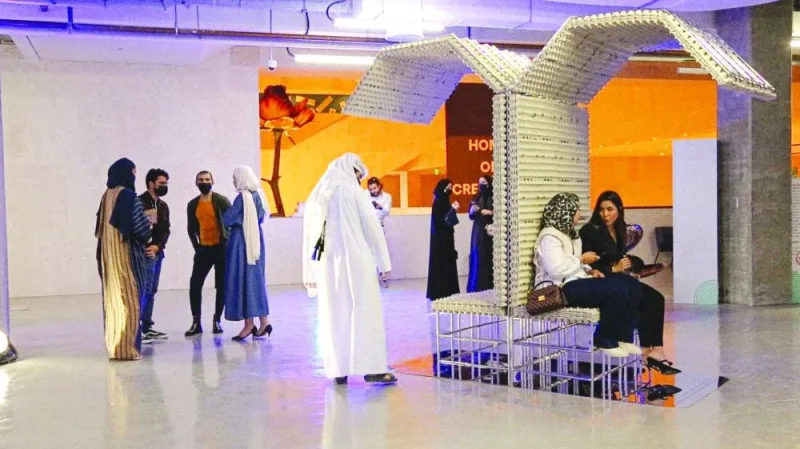Nada Raafat Elkharashi, who graduated from Virginia Commonwealth University School of the Arts in Qatar (VCUarts Qatar) in Doha, with a BFA in Interior Design in 2017, and an MFA in Design in 2021, created a unique public seating structure in response to Qatar Museum's open call on the theme 'Reuse, Recycle and Reduce'.
The piece of furniture was exhibited during Milan Design Week 2022, as part of the Rossana Orlandi Ro Plastic Exhibition. It was selected as a finalist for the international Rossana Orlandi Ro Plastic Prize 2022: Urban and Public Design and went on to win third place in the category.
The Ro Plastic Prize is the international award of 'RoGUILTLESSPLASTIC'. The award has been drawing the attention of an increasing number of designers, innovators, entrepreneurs, startups, scientists, researchers, and communication experts who are passionate about creating extraordinary and impactful projects that involve the reuse of waste.
The piece of furniture, with back-to-back sitting spaces and a perforated shade that lets in flickering light, was first unveiled in M7 in Msheireb Downtown Doha, during a 'Qatar Creates' event last year.
"The design calls for collecting local egg crates from the community, big supermarkets, chicken farms, and, most importantly, from individual households," Elkharashi said. "For this seat, I collected unused egg crates from local hypermarkets such as LuLu and Carrefour. I also purchased recycled pulp egg crates, to fill in certain spaces. But for future public seat collections, all crates will be collected locally, categorised according to size, and used for production.”
The VCUarts Qatar alumna says that in the long run, the concept and final product should motivate residents to have designated bins to dispose of their daily share of egg crates.
According to Elkharashi, the design and implementation of the furniture piece can be adapted to the number of egg crates collected, making it similar to a modular system where individual components can be added or removed. The core is designed using a metal brace, and screws. The cartons are assembled as one longitudinal cladding module, making the seat firm and functional. The more egg crates are collected, the more cladding modules can be joined as separate extensions at the top or on the sides.
Elkharashi added how as time passes, and the cartons degrade, only the metallic brace and the screws of the main structure will remain, leaving the public with a visual reminder to gather and replace the degraded crates with another batch of reused egg crates that are locked on the metal brace using the screws that protrude from it.

Nada Elkharashi collected egg crates from local supermarkets to create the seat.

The piece of furniture was unveiled at M7 in Msheireb Downtown Doha.
